Climbing the “Mountain” of Equity Work, a Team of Staff Members Looks to Cultivate a More Inclusive Community
“The mountain is so big, no one person can handle, or even take on, the whole thing.”
La Salle’s equity team is a group of faculty and staff committed to advancing diversity and inclusion efforts at the school.
December 9, 2020
In recent years, La Salle has taken several strides towards improving diversity, equity, and inclusion at the school.
These advances include professional development around equity issues for all faculty and staff, the creation of student affinity groups, and the implementation of school-wide themes during the past three years, focusing on understanding identity, building empathy, and engaging in dialogue.
Additionally, the school created and hired for two positions in the newly-formed Office of Equity and Inclusion. In 2019, Mr. Andrew Yoshihara was hired into the Diversity, Equity, and Inclusion Support role, serving as a resource and advocate for students of color. Then, at the start of this school year, Ms. Kiah Johnson Mounsey was hired for the brand-new Director of Equity and Inclusion position.
The school has also sent a total of 13 faculty and staff members to a year-long course in equity training through the Center for Equity and Inclusion, with three separate cohorts of individuals from La Salle receiving certification from the program over the past three years.
The faculty and staff members who have graduated from the CEI course, along with Ms. Mounsey and Mr. Yoshihara, now compose La Salle’s equity team, a group of individuals who are committed to advancing equity and inclusion at the school, along with improving the overall experiences of students and families of color.
The equity team members have brought what they learned from the CEI program back to the school, meeting intermittently with the goal to discuss ways to make La Salle more equitable and inclusive in all aspects, including policy and decision making, formal communications, and curriculum and professional development — essentially, applying an equity lens to all school initiatives, centering conversations around equity.
With the Black Lives Matter movement dominating the news media over the summer — thousands of Americans showed up in record-setting numbers, pouring into the streets to protest the police killings of George Floyd and countless other Black Americans — many people have begun to reflect more on personal biases and systemic racism.
“Institutional racism is a part of every institution in America,” English teacher and equity team member Mr. Chris Krantz said. “It just is.”
Art teacher and equity team member Ms. Cha Asokan, who is commonly called Ms. Cha, also emphasized the presence and impact of structures of racism.
“Systemic racism and institutional racism is alive and well all around us,” she said. “From systematic to institutional to cultural to personal, it goes down the line until it gets to the individual that it affects.”
One of the main goals of the equity team is to identify and address the effects of institutional racism and discrimination within the La Salle community.
“The whole idea, the whole foundation behind the group is to figure out how to collectively work together, how to raise agency in student voice and in parent voice and make La Salle be much more equitable and inclusive in the voices that we include in our decisions making process, in the way in which we make decisions, in the way that we communicate how we do things,” theater teacher and equity team member Mr. Michael Shelton said. “We have additional work to do to really address some of the systemic and institutional aspects of things that some of us don’t see, as part of the white majority culture.”
Topics such as implicit bias and institutional racism were addressed during the CEI course, which, Ms. Cha said, was “really intense.”
Religious studies teacher and equity team member Mr. Tom McLaughlin, who is commonly referred to as Mr. Mac, said that the CEI training “was one of the most intense years of my life. In terms of the amount of reading and writing and thinking that I was required to do to complete the program, it was really, really demanding.”
With this intense program, many members of the equity team found that they emerged from the training not only having benefited professionally, but also with significant shifts in individual perspective.
“I felt really personally moved by a lot of the learning,” counselor and equity team member Ms. Maritza Mendez said. “It was a really powerful experience for me.”
Vice Principal of Student Life and equity team member Mr. Brian Devine said that the training was “probably the most profound professional development I’ve done in my life… I look at the world completely differently because of that one year of CEI training.”
Ms. Mendez said that her experience learning about issues such as institutional racism during the CEI training prompted her to commit to Diversity, Equity, Inclusion, and Belonging (DEIB) work at La Salle.
“I just don’t think you can know about these things and choose not to do anything,” she said. “I feel like there’s no turning back from that, you can’t just opt out… As a person of color with people in my life who advocated for me, I just see it as, that’s part of what I need to do for the next generation.”
Before this year, the equity team would meet as needed when issues or ideas arose, and without a specific or outlined role in the school. Now, Mr. Devine said that as the team is “evolving,” it is trying to meet regularly twice a month. And with the hiring of Ms. Mounsey to fill the brand-new Director of Equity and Inclusion position, the equity team’s purpose has been “revitalized” and “reimagined,” Mr. Devine said.
“I think in a lot of ways, the equity team has redirected its efforts towards supporting the work that the Director of Equity and Inclusion office is participating in,” Mr. Devine said. “She’s got a number of initiatives underway already, and it’s been amazing already, the work that she’s been able to accomplish. She’s really trying to start at a foundational level and build up a critical mass of equity resources at the school.”
Under the leadership of Ms. Mounsey, the equity team has provided feedback and support in several initiatives, one of which is a redesign of the DEIB webpage on the La Salle Prep website.
Ms. Mounsey, with feedback from and collaboration with La Salle equity team members and outside professionals, rebuilt the webpage to become a more comprehensive, in-depth resource. It includes several subpages relating to topics such as student affinity groups, current initiatives, background information, and the previously-existing anti-discrimination statement.
The page also includes a “Learn With Us” section containing a developed list of resources for anyone to learn more about and engage with anti-racist work.
“I do want people to know I’m a resource, and I also want people to understand that I am learning myself, every single day,” Ms. Mounsey said. “This is a journey. And I do have my own resources. I’m in constant contact with folks from other private independent schools, public schools as well. I’ve got cohorts of people… we’re having conversations, we’re trading resources, we’re just in community.”
Mr. Krantz said that the work that has been done to expand the DEIB webpage is “marvelous.”
“We’ve never had anything remotely like this, especially communicating to the public, unequivocally, how we stand, and here’s some great resources, and we’re all in this together,” Mr. Krantz said. “I don’t think we’ve done a good enough job of communicating that to all of our families, and to the whole community, that we do share values, no matter what our politics are.”
“People, when they send their child to our school, need to know where we stand with regard to social justice,” Mr. Krantz said. “This website will contribute to that in a very positive way.”
Ms. Mounsey said that the DEIB webpage is “definitely a working document.” In coming weeks and months, she hopes to add several more resources to the page, including an anti-racist statement, further development in the affinity groups section, updated communication from leadership, student voice and input, and information about fundraisers and events.
In addition to further site expansions, another initiative underway out of the Office of Equity and Inclusion and supported by the equity team is the creation of an inclusion committee, which, according to the webpage, is to be a “committee of ethical, culturally competent, and visionary individuals” whose purpose is “to advance and promote La Salle Prep’s commitment to diversity, equity, and inclusion and belonging throughout the school.”
The inclusion committee will be similar to the equity team in essence, but will comprise a wider variety of individuals in the community, gathering the perspectives and input of parents, students, alumni, faculty, and staff who are interested in advancing DEIB work at the school.
“Whereas the equity team is really just faculty and staff, Ms. Johnson Mounsey really wants to make sure that the inclusion committee is representational of all stakeholders,” Mr. Devine said. “More voices at the table… That’s going to be really helpful with a lot of the work that we’ve been doing over the last few years.”
An application is open to those who are interested in joining the inclusion committee. Once the group is established, one of its first goals will be to develop a formal equity statement and equity lens, having attained a wider range of representatives to contribute to these projects.
“If we want to be more inclusive and we want to be more equitable, we need to really get feedback from students and parents,” Mr. Shelton said.

In addition to the creation of the new position of Director of Equity and Inclusion, which the equity team pushed for, several members of the team have also advocated for both positions in the DEIB department to be expanded to full time. Currently, both Ms. Mounsey’s and Mr. Yoshihara’s positions from the Office of Equity and Inclusion are part time.
“I’m one of the very many teachers that very much passionately think that both of these positions should be full time,” Mr. Shelton said. “By them not being full time, that in and of itself sends a message.”
Ms. Cha expanded on this idea.
“When we spend money on things, it says something about what we value,” she said. “Are we willing to put money into equity? And they have. La Salle really has, I really do believe that they have done a good job at that. Is there work to be done? Yes.”
Ms. Cha said that she supports full-time funding for DEIB positions because tackling issues around race and equity and pushing for further inclusion efforts are broad and in-depth tasks.
“This should be somebody’s full-time job,” she said. “Applying lens, organizing structure, that is a whole job into itself, if you want to do it right.”
Mr. Yoshihara, who is also a member of the equity team, is in strong support of expanding the DEIB positions.
“I think showing [students] that you’re going to have two part-time people in diversity and inclusion, but that you’re going to have five other counselors and different stuff, it says a lot,” he said. “It’s important for the kids, more so than for myself and for [Ms. Mounsey]… It’s kind of a joke in my head, that our equity and inclusion positions aren’t even equitable.”
Though various staff and administrative members are in support of this goal, funding these positions full time becomes more complicated by the abnormality of this school year and decisions around allocating resources.
Mr. Devine said that the development and hiring for the Director of Equity and Inclusion position in itself was “a stretch” financially, but “we felt like it was the right time and the right moment to create that position.”
In addition to the creation of Ms. Mounsey’s position, Mr. Yoshihara’s hours were increased from 18 hours per week last school year to 20 hours per week this school year, President Mr. Andrew Kuffner said.
“I know it’s not a huge amount, but just for perspective, we didn’t increase any other [staffing] anywhere else in the school,” Mr. Kuffner said. “The only area we’ve increased this year has been in DEI work, and I think that’s because it’s so important.”
Ms. Mounsey said that pushing for full time funding for DEIB positions is not one of her current priorities.
“I think it is important for the school, but it’s definitely not at the top of my mind,” she said. “I have no doubt that La Salle is committed to this work. They created this position, they were able to carve this position out… I’m not really concerned about it, because I know the commitment is there.”
Mr. Yoshihara also nodded towards the commitment to equity from the school as a whole, citing the quick creation of Ms. Mounsey’s position, which the administration put together in a matter of months.
“I think that shows how fast we can do things,” Mr. Yoshihara said. “Our commitment to equity is amazing. The intention is amazing… I think it’s making an impact on the students of color. I think it’s making an impact on the school in a little bit of a way, but not enough for them to see the value of it being full time.”
Mr. Shelton, who has been involved in equity work over the past decade, said that in recent years he has seen growing support for these conversations among staff members at La Salle.
“This is the first time in that short amount of time that I’ve been engaged in the work where there has been seemingly such a collective — from all different parties — collective group that’s like, ‘yes, we don’t know the answers yet, but we have to figure something out because this is not working,’” Mr. Shelton said.
“I feel very hopeful,” he said. “For the first time in what seems a really, really long time, people seem to be unified together, that we need to do something substantial and finally break down some of those power structures and really move forward.”
Ms. Cha said that it is important to get “everybody on board.”
“That’s when real change happens,” she said. “Even if you have different political views… It’s understanding that somebody else’s experience is not the same as yours.”
With more people engaged in DEIB work and growing support for applying an equity lens to every aspect of the school, Mr. Devine said it seems that “equity is a part of every conversation I’m having.”
“For me, that’s an ongoing goal, it’s been something that I came away from my training with — this needs to be embedded in every conversation we have,” he said. “And it certainly has become, much more frequently.”
To continue the conversation around race and equity, the school is assessing ways that these topics fit into and intersect with the curricula for each of the subjects offered at La Salle.
“Every student graduating from La Salle should get this curriculum, so that they leave La Salle knowledgeable not just in matters related to equity, but also understanding and wanting to be active in what we would call anti-racist work,” Mr. Krantz said.
If a system is implemented to weave equity topics into all curriculum at La Salle, which is a goal that Ms. Mounsey and members of the equity team have set their sights on, this would be a difference from past years at the school, Mr. Krantz said.
“If you think back eight, ten, 15 years ago, depending on who you got as a teacher — a history teacher, a religion teacher, English teacher — you may get this curriculum, or you might not,” Mr. Krantz said. “And what’s different now… is we’re moving. And it seems really slow… We are all chomping at the bit to move this more, and faster.”
“It’s hard, and it’s slow,” Mr. Krantz said. “It’s messy. And we want things to change immediately, but it takes time and it takes organization… The mountain is so big, no one person can handle, or even take on, the whole thing. So you just kind of chip away.”
Ms. Mendez shared a similar thought, saying that “this kind of work will always feel slow for those of us that want it to move fast.”
She said that she wants to “create for students a place where they don’t have to change who they are” to be “celebrated and seen,” and that while she has seen progress towards this goal over the four years that she has been at La Salle, there is still much work to be done.
Ms. Mounsey said that the seemingly slow pace of the work is “not out of the ordinary,” and that it is simply “the nature of the game.”
“This is absolutely understandable,” she said. “There’s so many things behind the scenes that have to happen and conversations that have to take place… Especially in this kind of work, almost more damage could be done if it’s not done correct, or with intentionality, or with a lot of thought.”
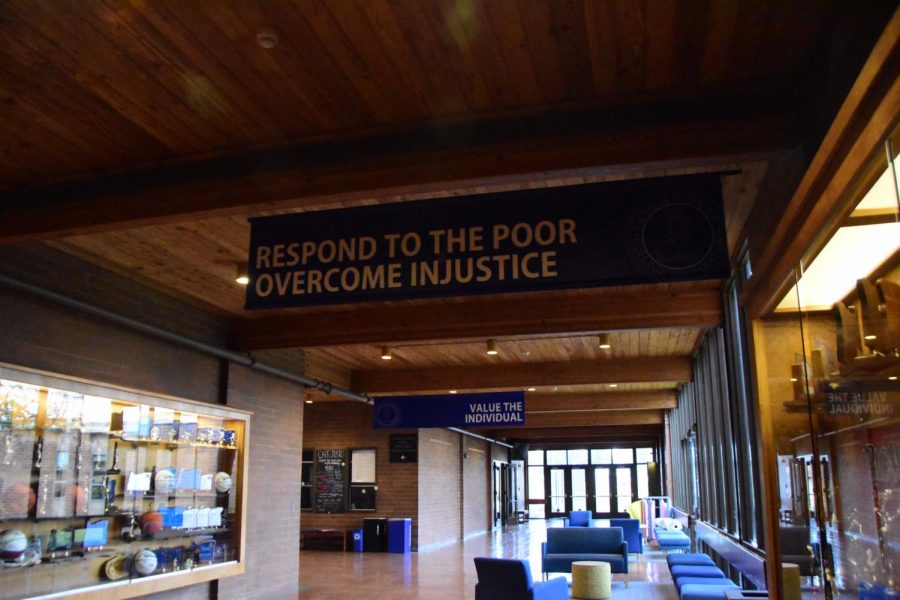
Part of the school’s overarching mission is based on the five principles of Lasallian education: respect for all persons, inclusive community, quality education, concern for the poor and social justice, and faith in the presence of God.
These five pillars are meant to drive every tenant of life at La Salle, and many students are quite familiar with each of these core values — similar messages drape from the ceilings of the school’s main hallway in the form of banners, which is what they are often referred to as. A teacher might cite them in their classroom, prompting students to reflect on ways that “the banners” can be lived out, or to examine actions of characters in texts in terms of “the banners,” or to discuss how “the banners” and their values are present in the world at large.
One goal that the equity team has is to ensure that these core values are not only banners that hang, inanimate, from the ceilings in the hallway, but that they are living facets of the entirety of the school, from the general atmosphere and the way that students and teachers interact, to the curriculum and the way that classrooms operate — “so that ultimately,” Mr. Shelton said, “we can be much more aligned to living out the banners that are in the hallway than we currently are now.”
Ms. Mendez said that for students to be engaged in something, “it has to be relevant.”
“I don’t know how many students walk through [the main hallway]… and think about those banners on a daily basis,” Ms. Mendez said. “And I’m not placing any judgment on that, that they should or shouldn’t, but if it was more directly tied into some of these ideas or thoughts, then that might resonate more than they do already.”
Mr. Krantz echoed the need for the school’s actions to better live up to the banners.
“Our behavior sometimes reflects those banners, sometimes it doesn’t,” Mr. Krantz said. “Those banners are worth trying to live up to.”
One banner that Ms. Cha feels is especially important is “value the individual.” She tries to live this out by creating space for students to share their individual stories, or “racial autobiographies,” which is a valuable part of equity work, she said.
“Hearing people’s truth, hearing your truths, is going to change you,” Ms. Cha said. “You can’t walk away from somebody who just told you their truth, and [say], ‘that doesn’t exist.’”
“Everybody has different strengths,” Ms. Cha said. “All of these things are valuable. And that’s… what equity is — looking at how powerful each individual is, starting with our students.”
In her classroom, Ms. Cha tries to de-center dominant white culture and shift the focus to the experiences of minorities and other groups so that students can explore a more comprehensive perspective of the world, a choice that other teachers at La Salle have also implemented into their own classes.
“It’s not like, ‘oh, it’s Black History Month, let’s study Black artists,’” said Ms. Cha, who teaches art. “It’s all year, every year. We’ve all been taught about Vincent Van Gogh and a hundred other dead white men in the arts. And of course I don’t ignore them, they’re important too, but, you know, equal time. We’ve got to spread this out.”
Mr. Shelton, who teaches theater, said that equity has an important place in art.
“Art matters to people, art pulls us together, art has a lot to say about the world politically and socially, and about injustice,” he said. “And none of that matters if the people that are being affected, if the minority voices, and the women voices, and the transgender voices, and the BIPOC voices that have so long been on the outside don’t have a way in.”
Thus, Mr. Shelton feels that it is important for him, as someone involved in the arts and education, to “be an ally with people that need to have their voices heard,” and to help provide a platform for the amplification of these voices.
He wants to “contribute to being a part of an environment where the expectation is that there’s a level of equality for all artists stepping forward,” he said. “The expectation, the cultural norm, is shifting to be more collaborative and collective.”
Mr. Devine said that based on feedback from students in recent years, “there’s a lot of our students of color who feel like when they come to La Salle, they’re getting the education that they’ve been promised. They’re being challenged academically, they’re growing academically, but they don’t necessarily feel the connection or the community that we hope that students will experience when they come to La Salle.”
Addressing this issue necessitates a “hard look at who are we as a school,” Mr. Devine said.
He said that the conversations and dialogues around race and culture that take place inside and outside of class need to be examined, with the goal to graduate students who are “able to understand some really complicated and nuanced conversations that are happening in the world around race.”
And ultimately, Mr. Devine said that the goal is to ensure that all students feel the effects of the banners — inclusive community, respect for all persons, concern for social justice — truly lived through the experience at the school.
“I want to try to make sure that when students walk in the door, that this feels like a school that lives up to the banners in the hallway, that it is an inclusive community, that students do feel respected and accepted,” Mr. Devine said. “And I don’t know that that’s happening as much as it needs to for our students of color.”


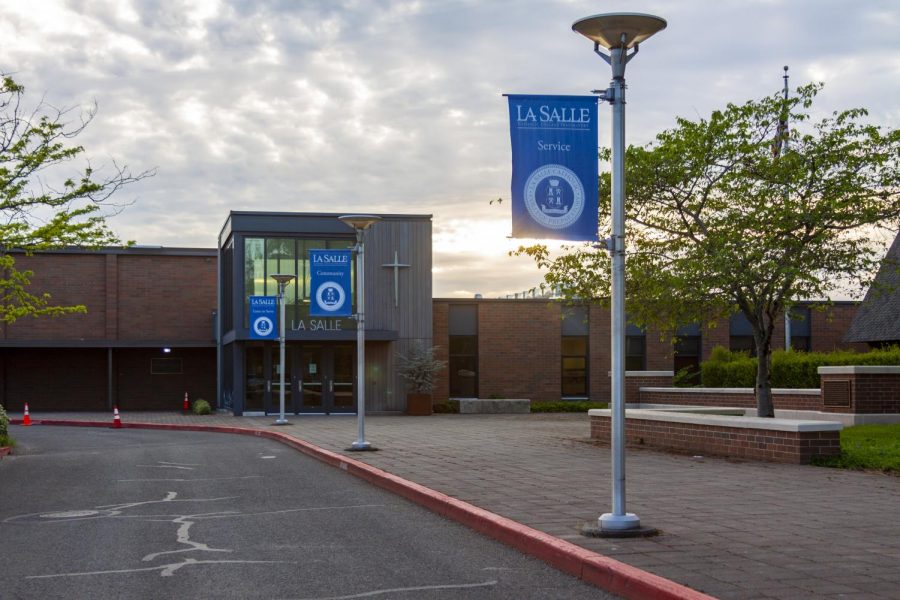
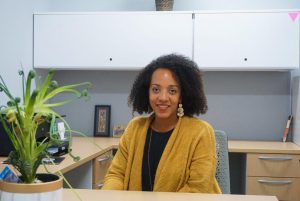
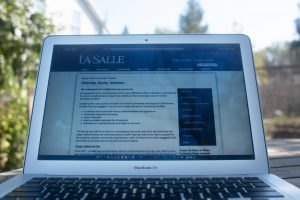
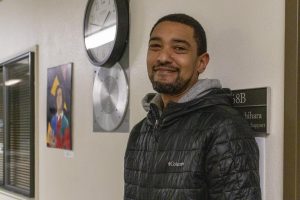

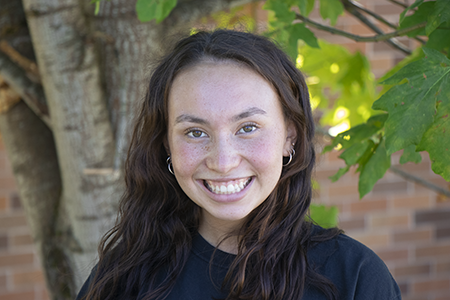



Tom McLaughlin • Dec 10, 2020 at 9:22 am
Outstanding writing, Maddie. Congratulations. You’ve tackled a challenging and critical topic. The way you weaved the contributions from various members of the DEIB team was so impressive. I’m proud to be a part of the La Salle community, proud to work with the loving, committed people you interviewed for this story, as well as many other allies and accomplices on the staff. I’m excited to see where we grow. And the work you and The Falconer staff are doing is helping move us forward. Thank you.